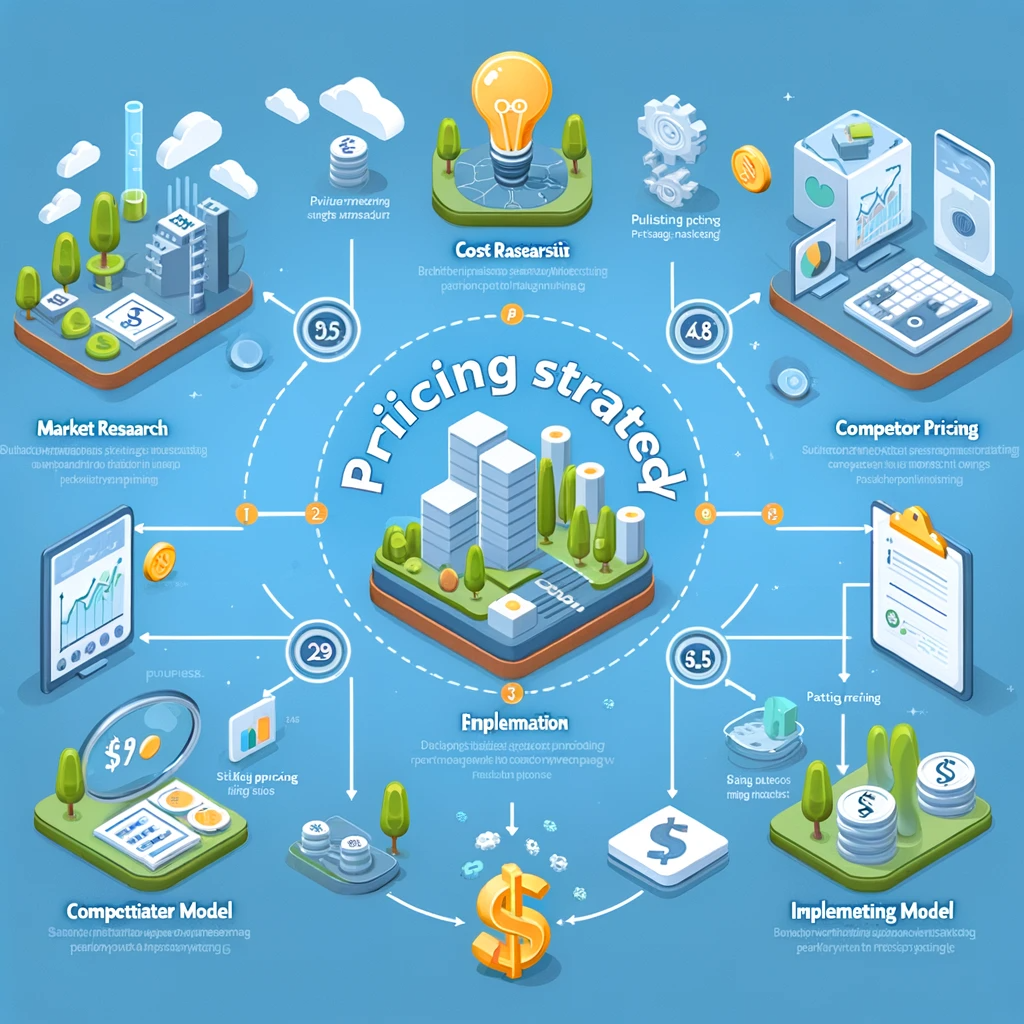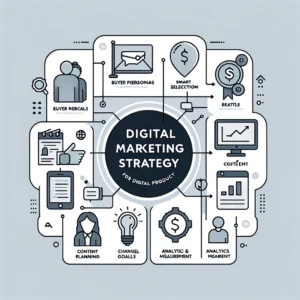Pricing strategy plays a pivotal role. It’s not just about setting a value on a product; it’s a comprehensive approach that influences how a product is perceived in the market, how it competes, and ultimately, its success in the marketplace. This article delves into the intricate world of pricing strategies, focusing on their critical role in product development and growth. We’ll explore various pricing models, analyze their impact on different stages of product life cycles, and offer insights into innovative pricing approaches that can lead to competitive advantages and robust growth.
Understanding Pricing Strategies in Product Development
The Role of Pricing Strategy in Product Development
In product development, pricing strategy is more than just a number. It’s a critical tool that can significantly influence a product’s market entry and its initial perception among customers. This section will explore how pricing decisions impact product positioning, market acceptance, and initial sales momentum. It will delve into the nuances of selecting the right pricing approach during the early stages of a product’s life cycle and how this decision can either set a strong foundation for success or become a stumbling block in a highly competitive market.
Key Considerations for Setting Prices in New Product Development
Setting the right price for a new product requires a balance of various factors. This section will discuss the importance of understanding market dynamics, cost structures, consumer psychology, and competitive landscapes. We’ll analyze how factors like production costs, perceived value, and market positioning influence pricing decisions. The section aims to provide a detailed framework for evaluating these considerations, helping readers to develop a pricing strategy that not only covers costs but also positions the product effectively in its target market.
Pricing Strategies for Product Growth

Leveraging Pricing for Market Penetration and Expansion
This section explores how pricing strategies can be effectively used for market penetration and expansion. It will delve into the tactics like penetration pricing, where products are introduced at a lower price to gain market share, and how this approach can be a game-changer for new products entering a competitive market. We’ll also look at how pricing can be adjusted as the product gains market presence and the strategic decisions involved in shifting from an introductory price to a sustainable, long-term pricing model.
Adjusting Pricing Strategies for Product Maturity Stages
As products mature in the market, their pricing strategies need to evolve. This part of the article will focus on how pricing should be adjusted during different stages of the product life cycle, including growth, maturity, and decline. We’ll discuss strategies such as high-low pricing for rejuvenating interest in mature products and skimming pricing for maximizing revenue from innovations. This section aims to provide insights on maintaining product relevance and profitability throughout its market journey.
In-depth Analysis of Key Pricing Models
Competition-Based Pricing and Market Dynamics
In this section, we’ll delve into competition-based pricing, a strategy that primarily focuses on the existing market rate for a product. We’ll explore how businesses use competitor prices as a benchmark and the implications of this strategy in different market scenarios. This approach’s effectiveness in highly saturated markets and the risks and rewards associated with aligning prices too closely with competitors will be examined.
Cost-Plus Pricing: Balancing Costs and Market Expectations
Here, we’ll dissect the cost-plus pricing strategy, which bases prices on the cost of production plus a markup. This section will discuss the simplicity and transparency of this model, its common application in retail, and why it may not always be the best fit for service-based businesses. We’ll also cover the limitations of this approach in terms of value perception and market competition.
Dynamic Pricing: Adapting to Market and Customer Demand
Dynamic pricing, known for its flexibility in response to market and customer demand, will be the focus here. We’ll explore how this model uses algorithms to adjust prices in real-time, considering factors like competitor pricing and customer behavior. The application of dynamic pricing in industries like hospitality and airlines, and its potential for maximizing profits while maintaining market competitiveness, will be analyzed.
Innovative Pricing Models for Competitive Advantage

High-Low Pricing Strategy for Product Lifecycle Management
This segment will examine the high-low pricing strategy, where products are initially priced high and then lowered over time. We’ll discuss its effectiveness in retail, particularly for seasonal or frequently updated products like clothing and home decor. The psychological appeal of this strategy to consumers, especially in anticipation of sales events like Black Friday, will be explored, alongside its impact on maintaining customer interest throughout a product’s lifecycle.
Penetration Pricing: Disrupting the Market for Growth
Penetration pricing, where companies enter the market with exceptionally low prices to draw attention from higher-priced competitors, will be discussed here. This section will analyze the effectiveness of this strategy in new market entries or competitive market disruptions. The sustainability of this approach, its initial impact on market dynamics, and long-term strategies for transitioning to profitable pricing will be considered.
Skimming Pricing: Maximizing Revenue at Different Product Stages
Here, we’ll delve into the skimming pricing strategy, which involves setting high prices initially and gradually lowering them over time. The applicability of this strategy in technology sectors and its role in recovering sunk costs while catering to different market segments will be examined. We’ll also discuss the challenges and opportunities presented by this model, including the potential for attracting competitors and customer reactions to price reductions.
Customer-Centric Pricing Strategies
Value-Based Pricing: Aligning Price with Customer Perceived Value
This section will explore value-based pricing, where prices are set based on the perceived value to the customer rather than solely on cost or market standards. We’ll discuss the importance of understanding customer needs and expectations, and how this strategy can enhance customer loyalty and satisfaction. The challenges of implementing value-based pricing, such as the need for constant market research and potential variations in pricing, will also be covered.
Psychological Pricing: Influencing Customer Perception and Behavior
Psychological pricing strategies, which aim to influence customer behavior and perception through pricing, will be analyzed here. We’ll delve into techniques like charm pricing and their impact on consumer purchase decisions. The role of psychological factors in pricing, such as the perception of value or quality based on price, and strategies for leveraging these perceptions in marketing and sales will be explored.
Geographic Pricing: Tailoring Prices to Different Markets
In this section, we’ll discuss geographic pricing, which involves varying prices based on geographical location or market. The rationale behind this strategy, including factors like local economic conditions, consumer purchasing power, and logistics costs, will be examined. We’ll also look at how technology, particularly digital marketing, has facilitated more refined geographic pricing strategies.
Conclusion
In conclusion, this comprehensive exploration of pricing strategies demonstrates their critical impact on product development and growth. From understanding the basic models like cost-plus and competition-based pricing to innovative approaches like high-low and penetration pricing, each strategy offers unique advantages and challenges. The key is to align pricing strategies with product lifecycle stages, market dynamics, and customer perceptions. Effective pricing not only covers costs but also positions products competitively, drives market penetration, and maximizes profitability. Businesses should continuously assess and adapt their pricing strategies to stay relevant and successful in the ever-evolving market landscape.



